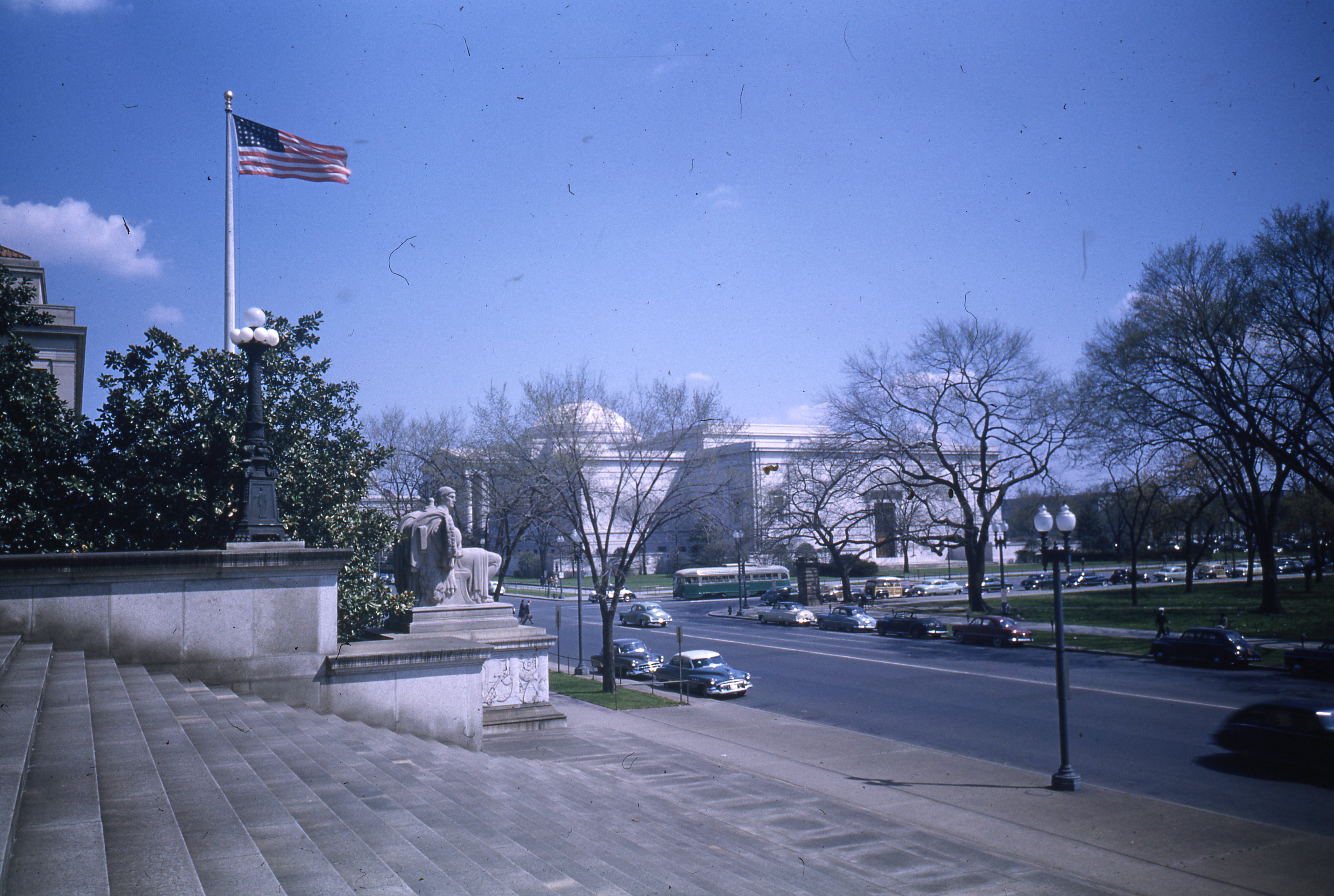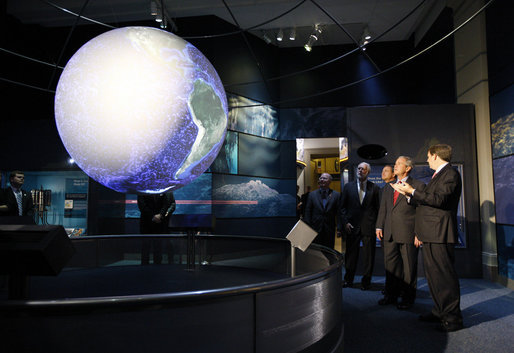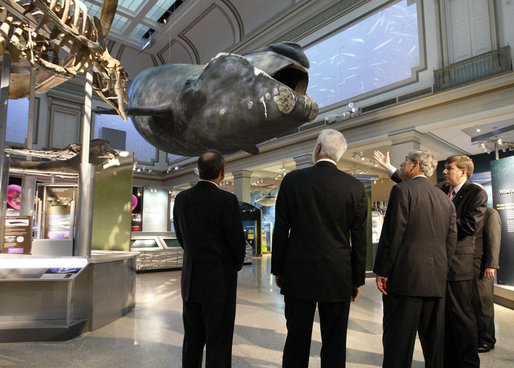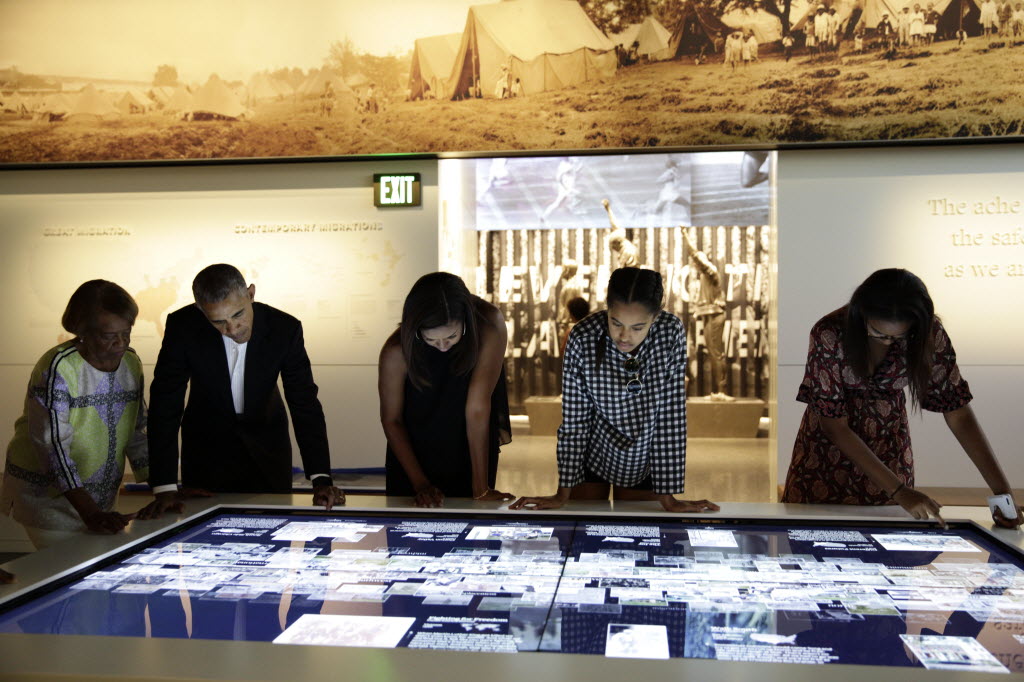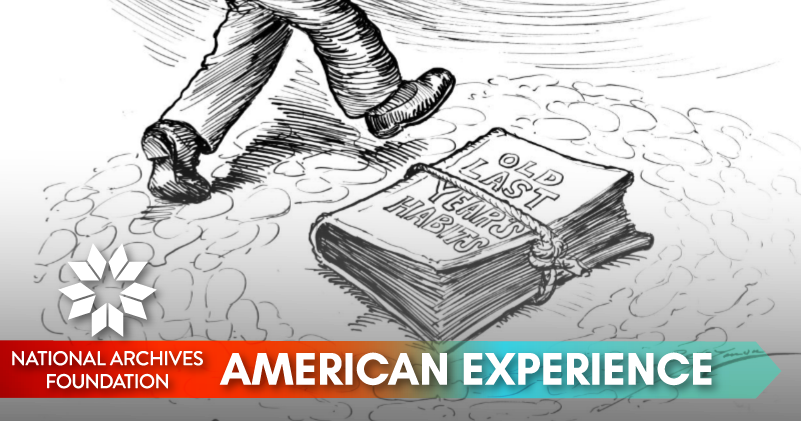Won’t You Be Our Neighbor?
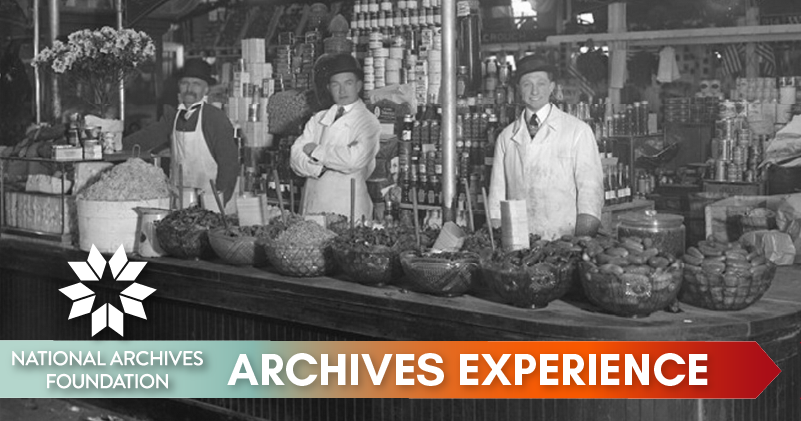
The day before Thanksgiving has the reputation of being the worst day to travel. Most travel to be with family and close friends. Some travel to a specific destination: their hometown.
Whether it’s once a year or every few years when you can go back to your hometown, seeing what’s changed and what stayed the same is eye-opening or comforting. Visits bring feelings of nostalgia for a simpler time or excitement about what’s new.
Over the years, the Archives’ neighborhood in Washington, D.C.’s Federal Triangle has undergone rapid changes. One of the biggest was the transformation of Central Market into the National Archives! Once where pickles and apples were sold, the Archives is now a place where history is told.
Whether you’re reading this from your hometown or are preparing for your Thanksgiving back home, enjoy taking a stroll through our neighborhood and its history.

Patrick Madden
Executive Director
National Archives Foundation
Who Was Here First?
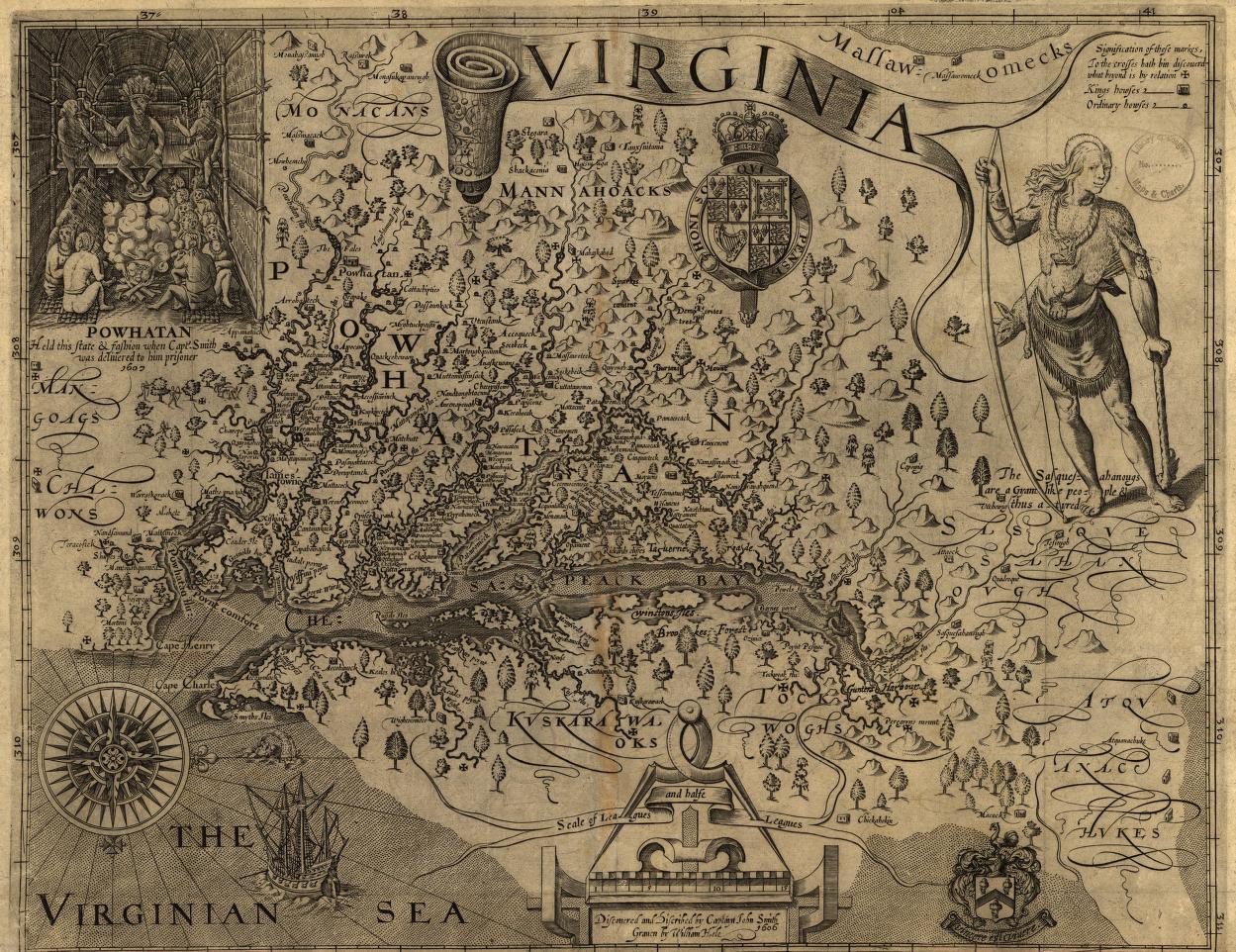
Map of Virginia
Library of Congress
Control Number:
99446115
The Native people who occupied the land Washington, D.C., and the National Archives sits on were the Nacotchtanks, a group of about 300 Indians who founded a village they named after themselves, Nacotchtank, meaning “a town of traders.” Europeans latinized their name as “Anacostans,” which also gave the Anacostia River its name. The Nacotchtanks and the Piscataway Indians traded widely throughout the region with many other tribes and, eventually, with the Europeans who began to colonize the Eastern seaboard.
However, Europeans brought with them not only kettles, guns and calico, but also diseases like measles and smallpox that quickly decimated the Native populations. They also set about driving the remaining Indians off their lands. Soon, the surviving members of the Nacotchtank and Piscataway tribes sought refuge with Indian tribes to the north of the Chesapeake Bay area, leaving the land that became Washington, D.C., behind them.
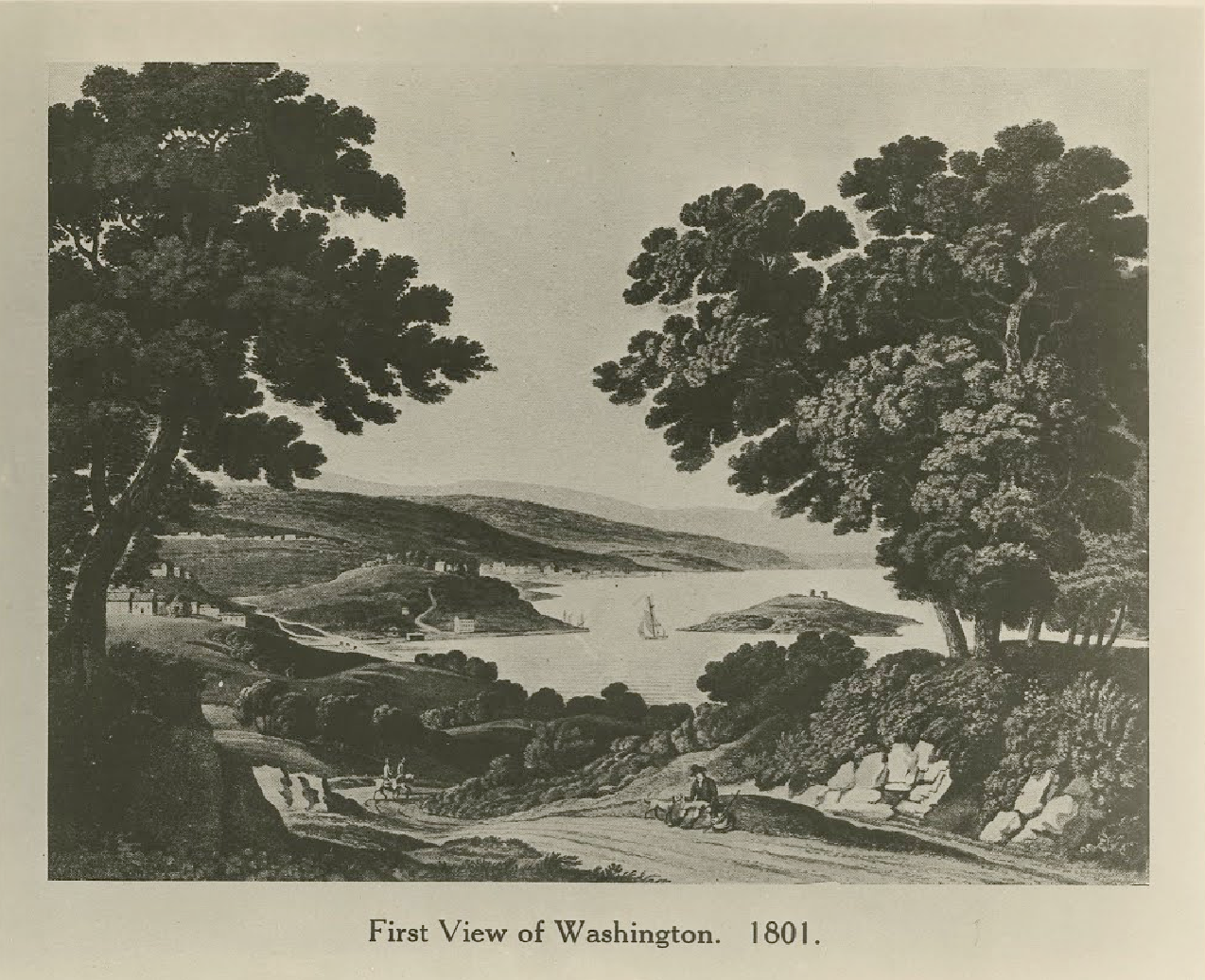
First view of Washington, 1801
National Archives
Record Group
220-PA-15

Original sketch of Washington
Library of Congress
Call Number:
G3851.G46 1792 .F3 1893
Off the Market
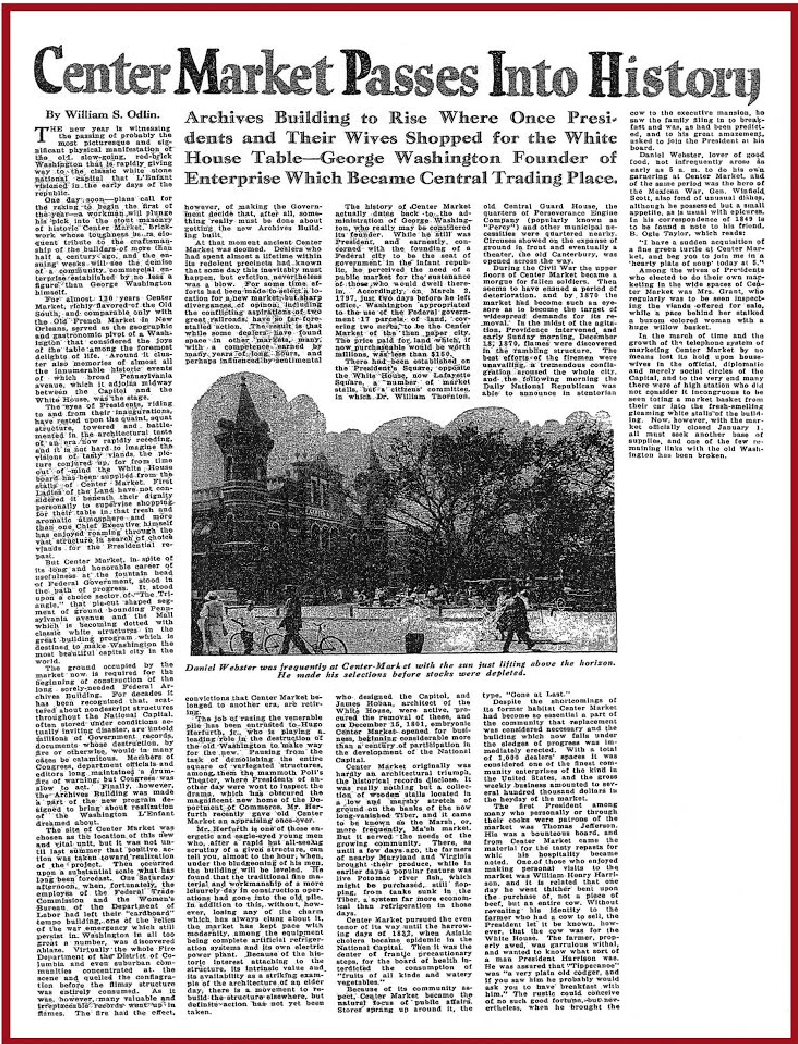
Central Market passes into history article
The Washington Post 1931-01-04
The National Archives building sits on the site of the old Center Market on Constitution Avenue between 7th and 9th Streets, NW. President George Washington himself designated the land as a public market in 1797, and it opened in 1802, beside the Washington City Canal, which eventually was filled in and renamed Constitution Avenue. For nearly 70 years, the market grew into a hodgepodge of frame buildings where the high and low of the city mingled and shopped.
Eventually, Congress got involved because of public concerns that the chaotic conditions at the market were health and safety hazards. After some typical bureaucratic wrangling, in 1870, Congress passed an act of incorporation that authorized the Washington Market Company to clear the area of the existing buildings. Adolph Cluss, the company’s German-born architect who had become famous for his red-brick buildings, then submitted plans for a market building.
The new Center Market opened for business on July 1, 1872. The 57,500-square-foot building boasted three wings that accommodated nearly 700 stalls, plus artisanal running water, elevators, electricity and cold storage rooms for meats and other perishables. Outside the building, there were 200 designated spaces where vendors could park their wagons and sell their products. It was the largest public market in the country when it opened. The quality of the merchandise sold there quickly became renowned throughout the city.
Unfortunately, the real estate the market sat on became too valuable for its own good. In rapid succession, new federal buildings rose around it until, in 1931, the market closed, and the building was demolished to make way for the National Archives.
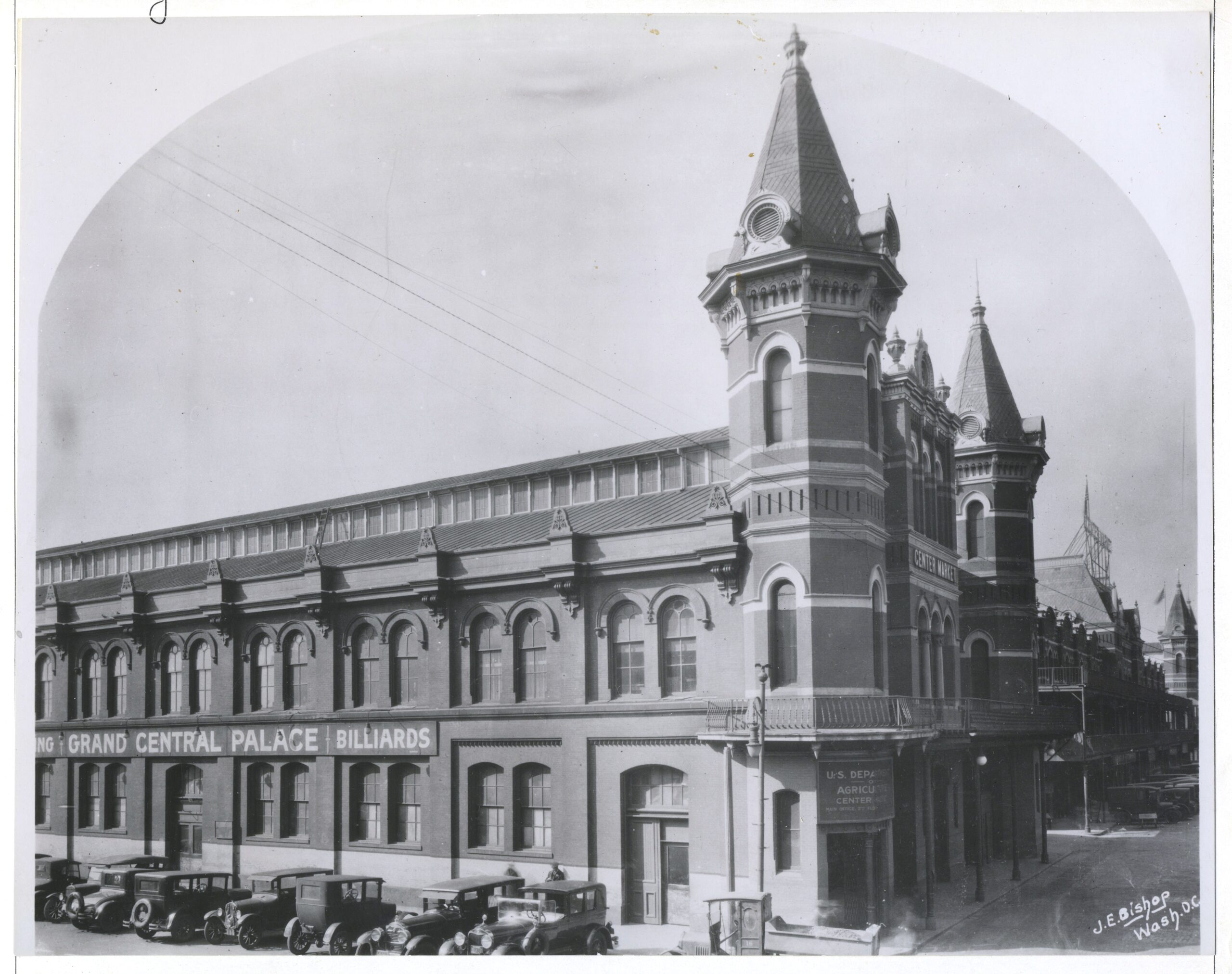


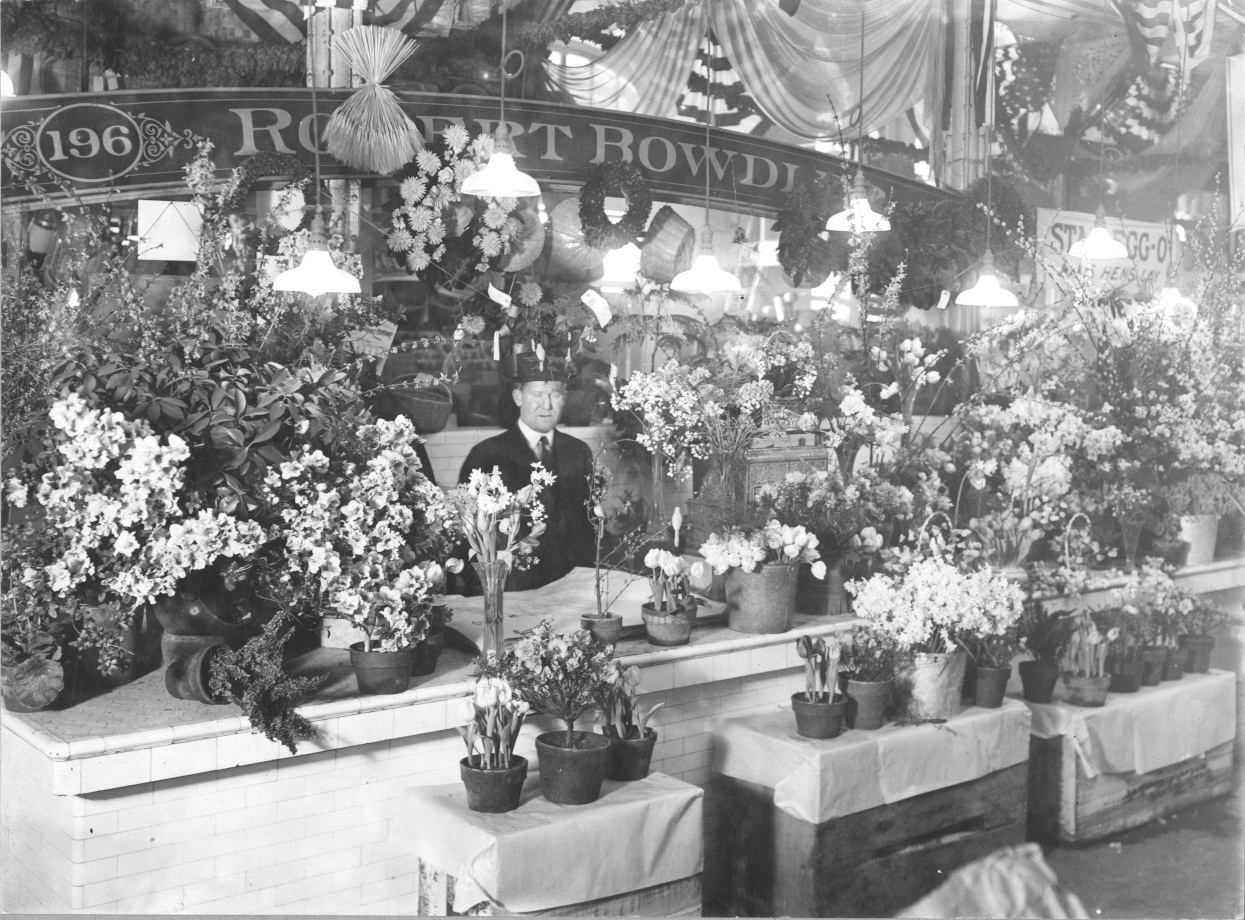
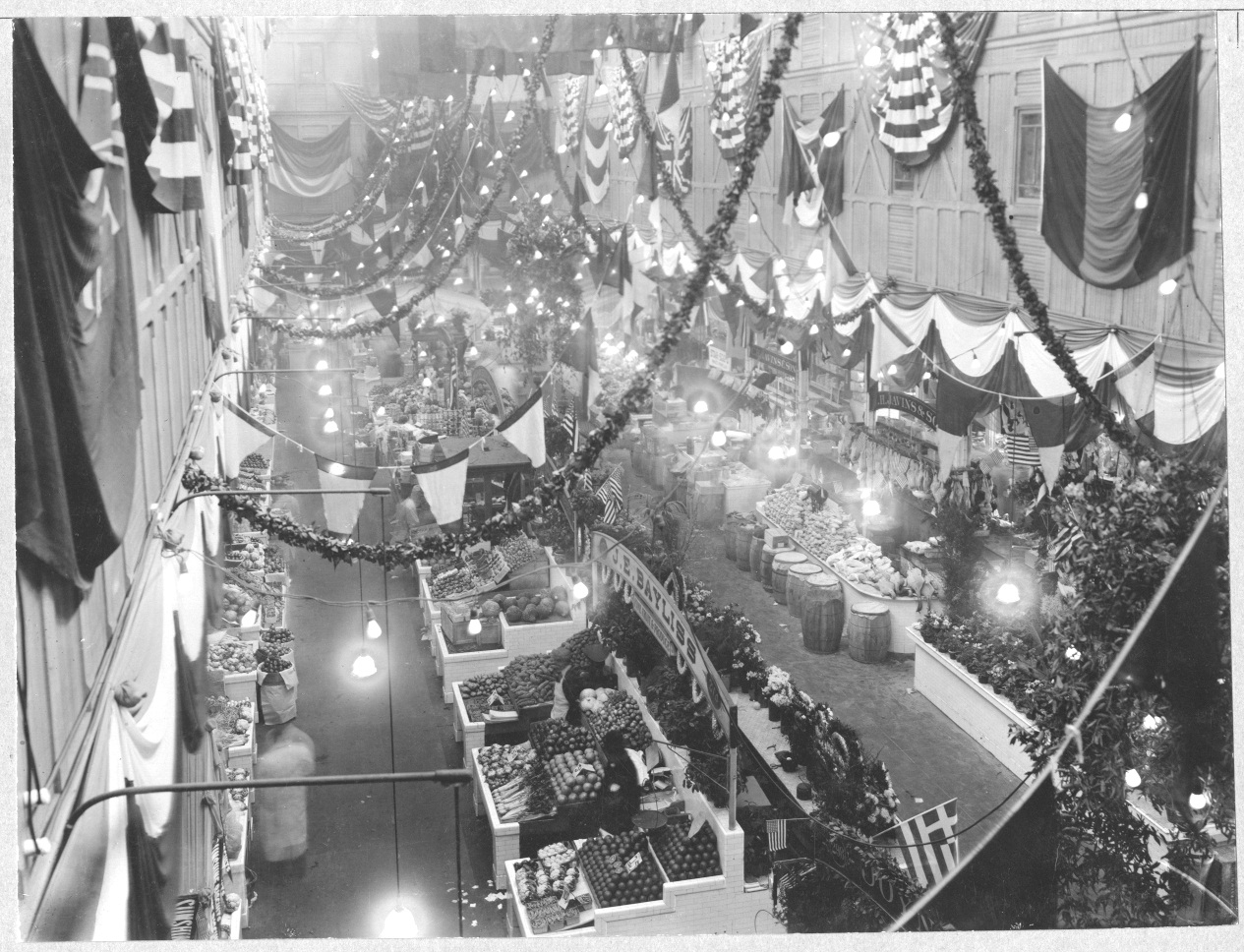
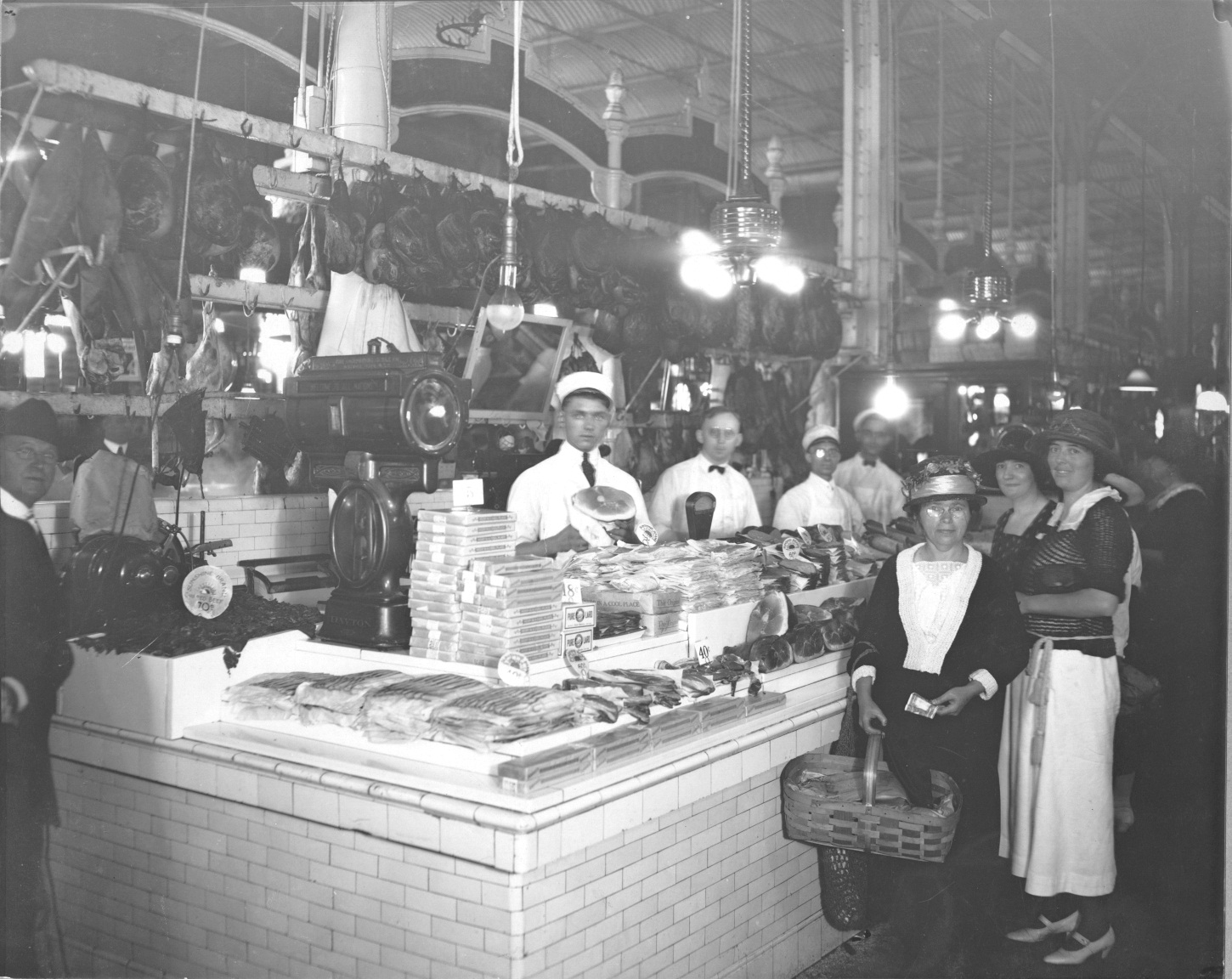
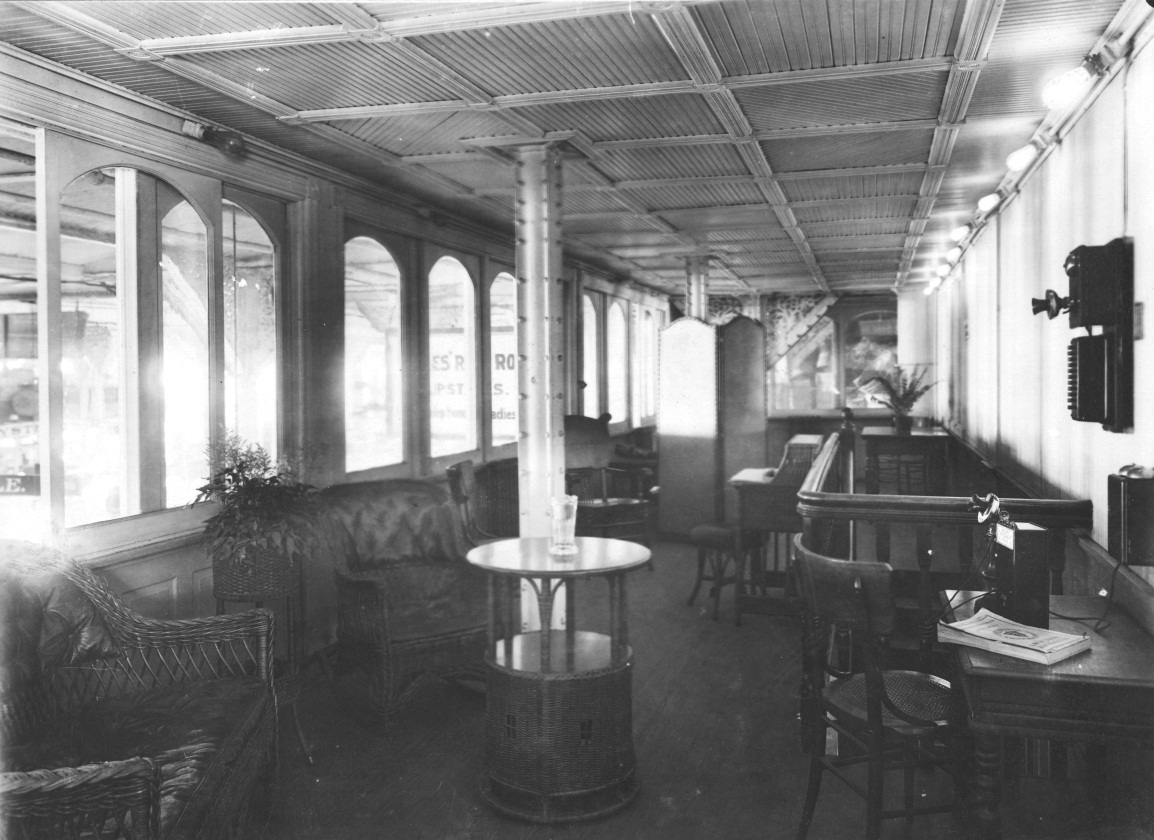
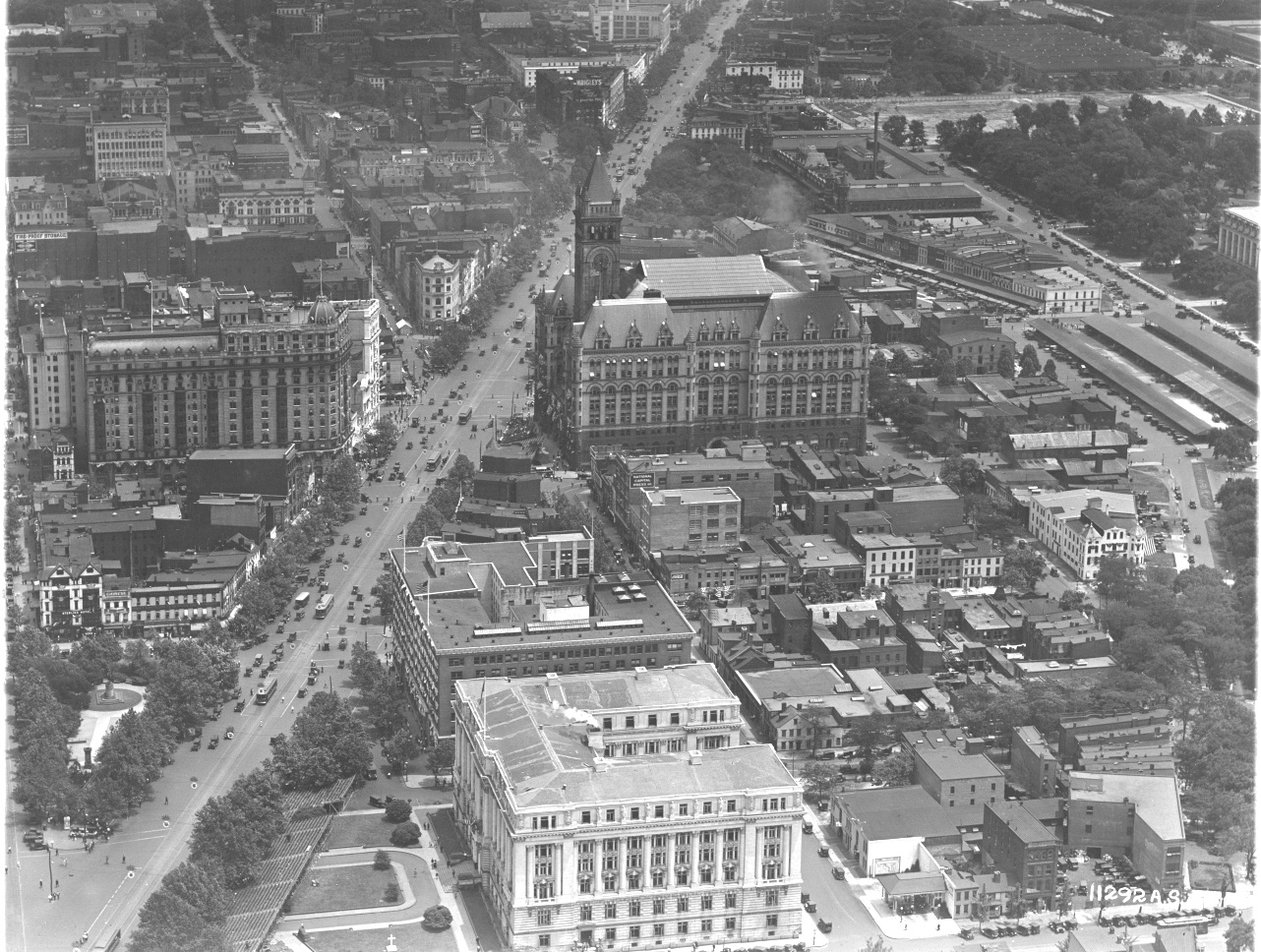








Moved Out

Modern Day Chinatown, Friendship Arch
National Archives Identifier: 24067172
Chinatown in Washington, D.C., has had a nomadic existence. Chinese immigrants first arrived in Washington after 1851, but they didn’t begin to establish the original Chinatown on the south side of Pennsylvania Avenue until about three decades later. Chinatown eventually grew to encompass community organizations, restaurants and markets. In the 1930s, however, the construction of Federal Triangle pushed Chinatown out of that area and north to between 5th and 7th Streets, NW. It eventually extended to between G Street and Massachusetts Avenue and 5th and 9th Streets. In 1986, the city dedicated a “Friendship Arch” on H Street, NW as a symbol of its sister city, Beijing.
In 1997, however, the city built the MCI Center (now named the Capital One Arena) on the block between 6th and 7th Streets and F and G Streets, effectively eliminating most of Chinatown. Only a handful of Chinese residents still lived in the area in 2015, according to the Washington Post

Moved In
Located in the district of Washington, D.C., called Federal Triangle, the National Archives was built on a plot of land between 7th and 9th Streets selected specifically by the architect John Russell Pope, because it is the geographic center between the White House and the U.S. Capitol building. The Archives sits between the Federal Trade Commission and the Department of Justice on Constitution Avenue, facing several of the Smithsonian Institution museums on the National Mall across Constitution.
To the north, along Pennsylvania Avenue, the Archives is adjacent to the Navy Memorial, where visitors can listen to military bands and watch military drill teams show off their fancy team skills. Further up Pennsylvania Avenue is the Federal Bureau of Investigation.

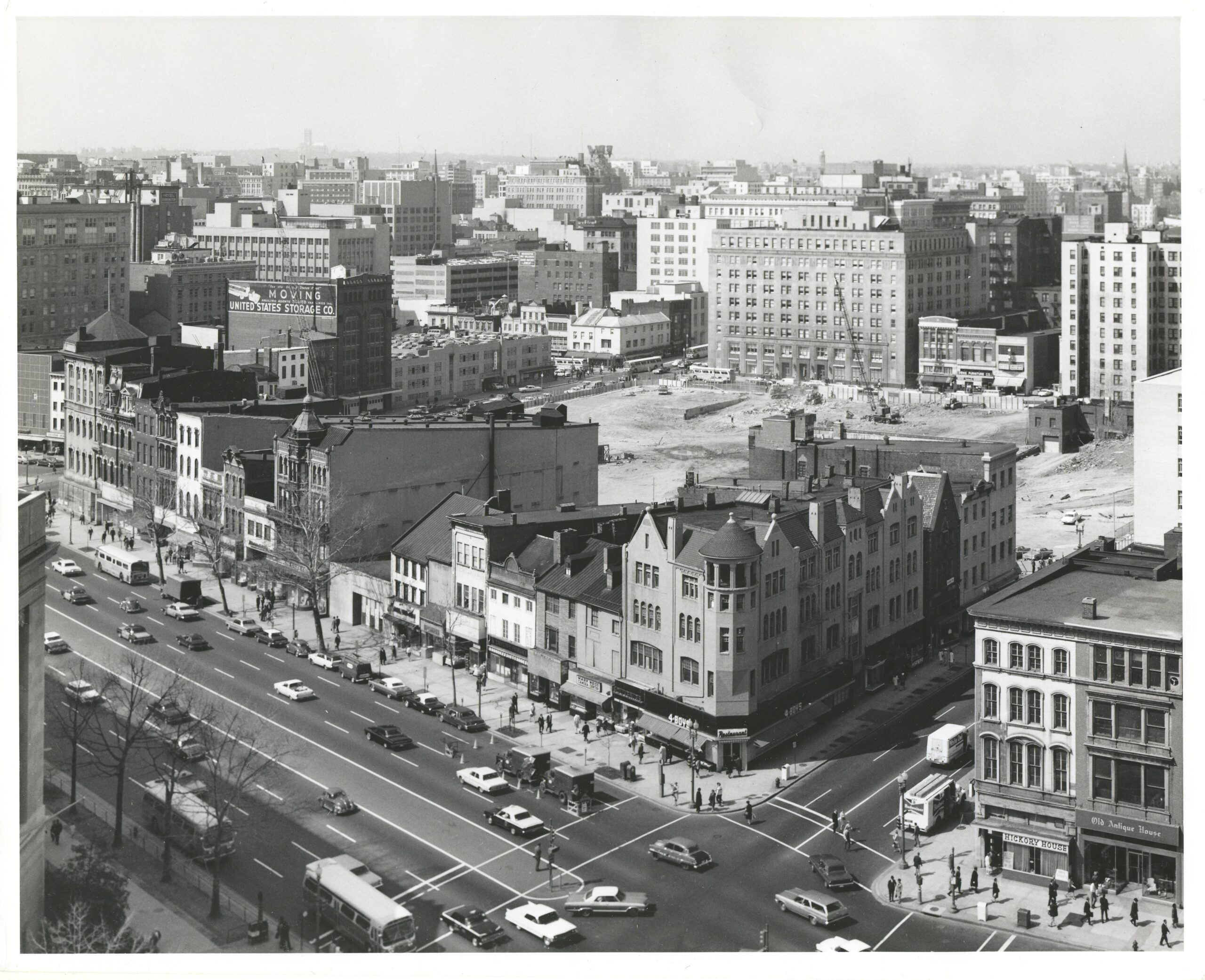
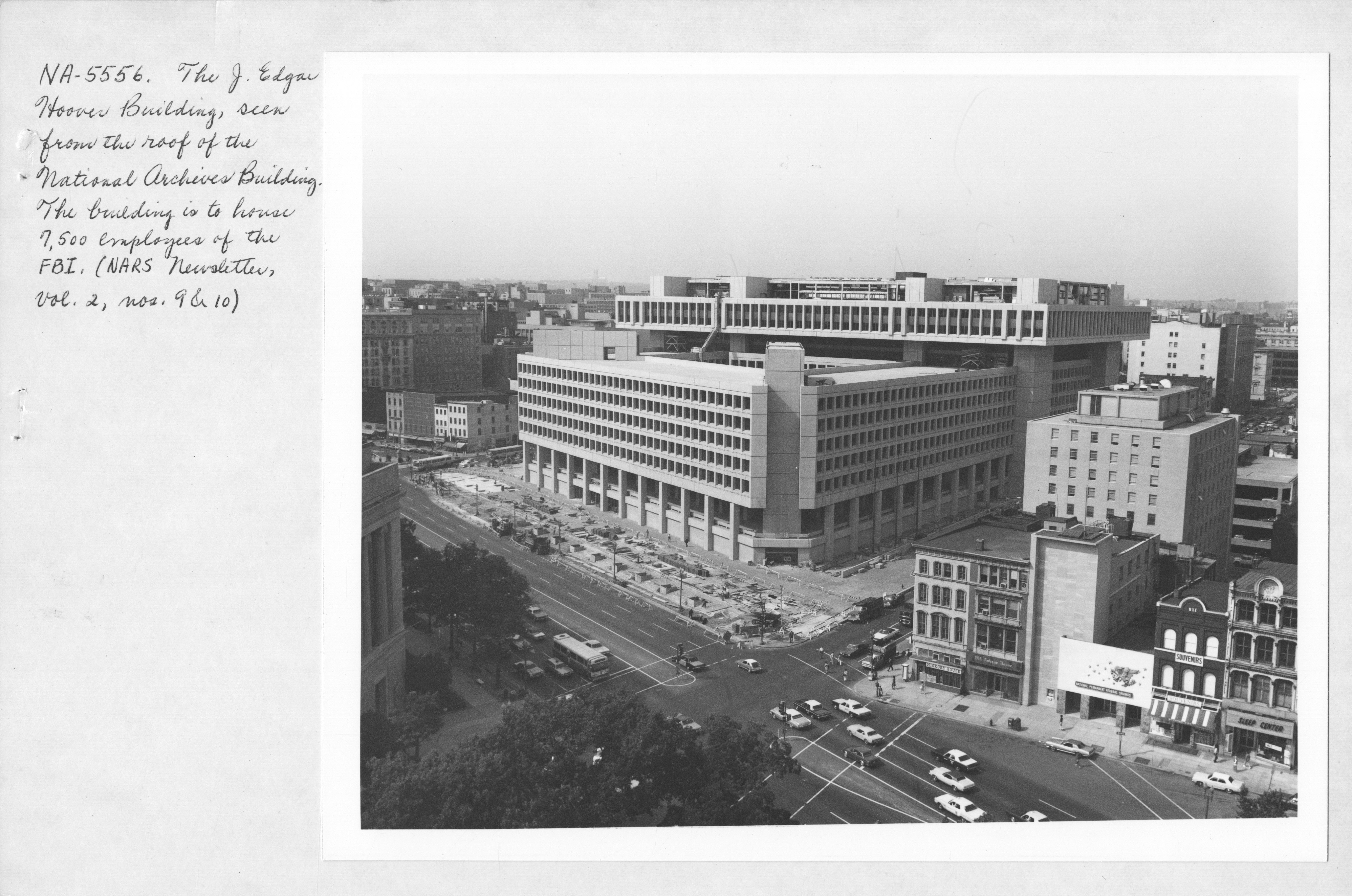
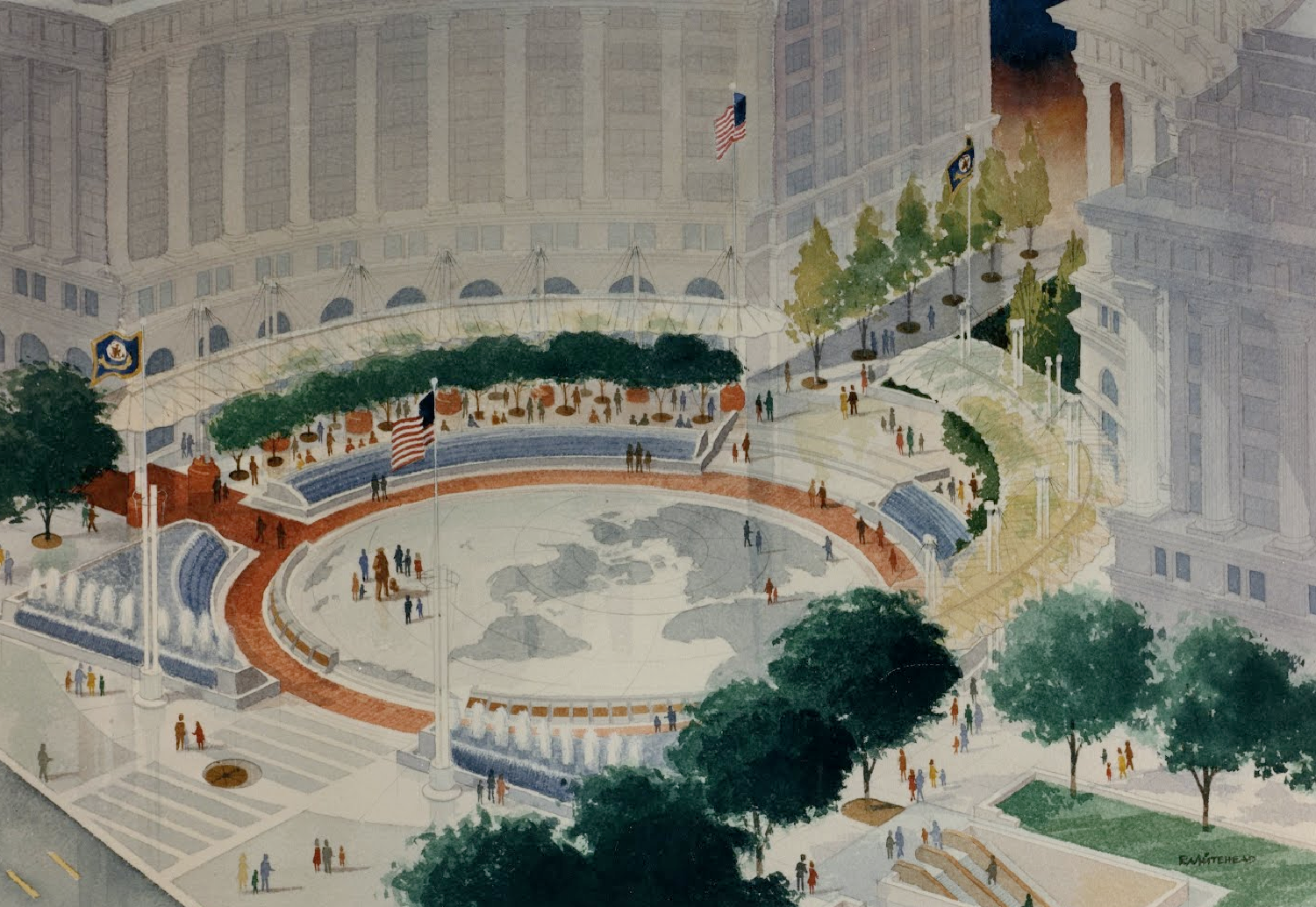
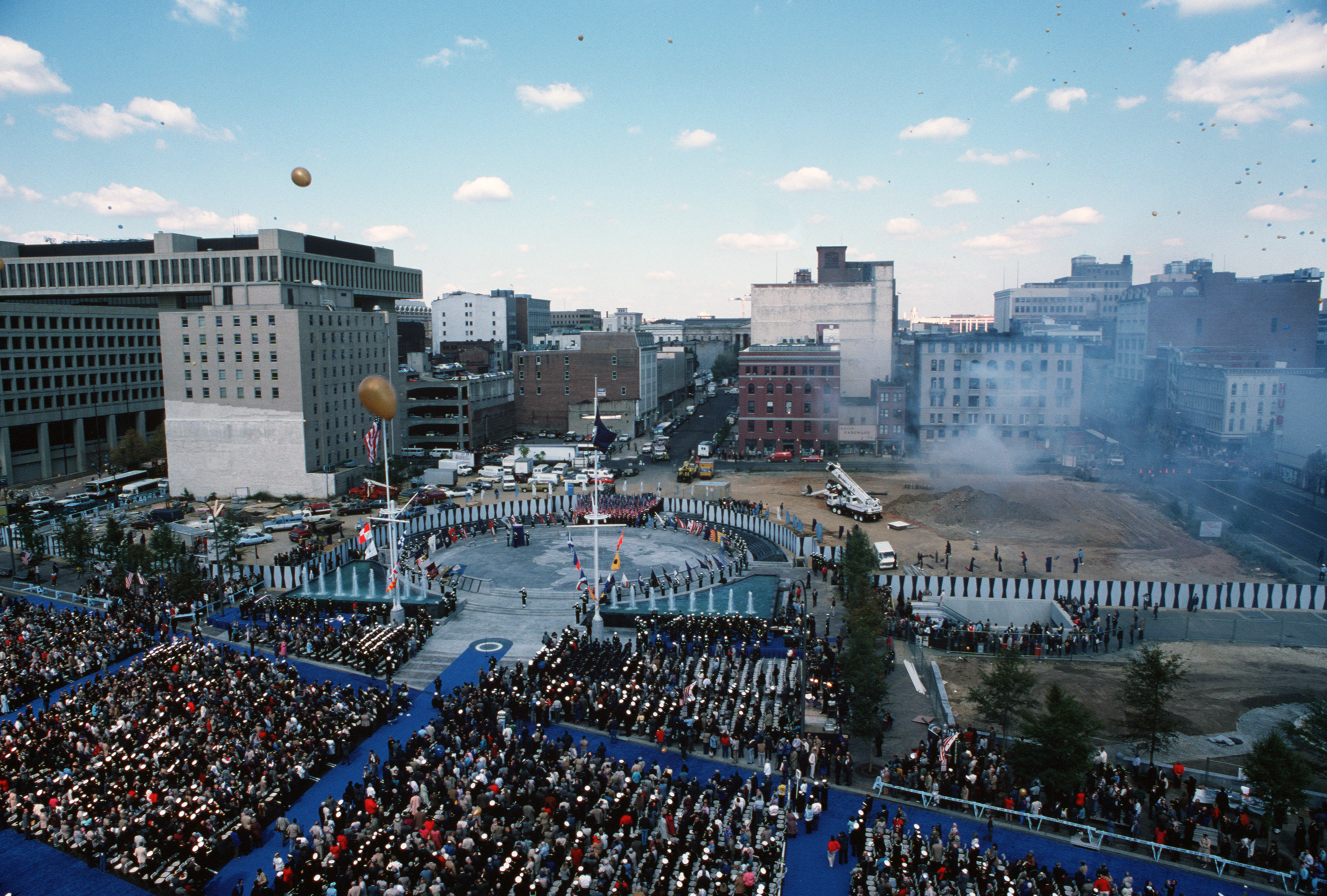





Neighbors, Not Roommates
One frequently asked question about the National Archives whether it’s a branch of the Smithsonian Institution. The answer is no, but the National Archives building is a proud neighbor to several Smithsonian museums that are within easy walking distance.
Just south of the Archives building across Constitution Avenue, NW, are the National Gallery of Art Sculpture Garden and the East and West buildings of the National Gallery of Art (fun fact: the East Wing was designed by Archives’ architect John Russell Pope). Immediately to the west of the National Gallery is the National Museum of Natural History, which also features the Smithsonian Pollinator Garden on the corner of the 9th Street Expressway and Madison Drive, NW. Next door is the National Museum of American History, and a short walk further west is the National Museum of African American History and Culture at 14th Street, NW and Constitution.
Two more Smithsonian museums that are close by are the National Portrait Gallery and the Smithsonian American Art Museum, which are both housed in the old Patent Office Building just north of the Archives at 8th and G Streets, NW.

